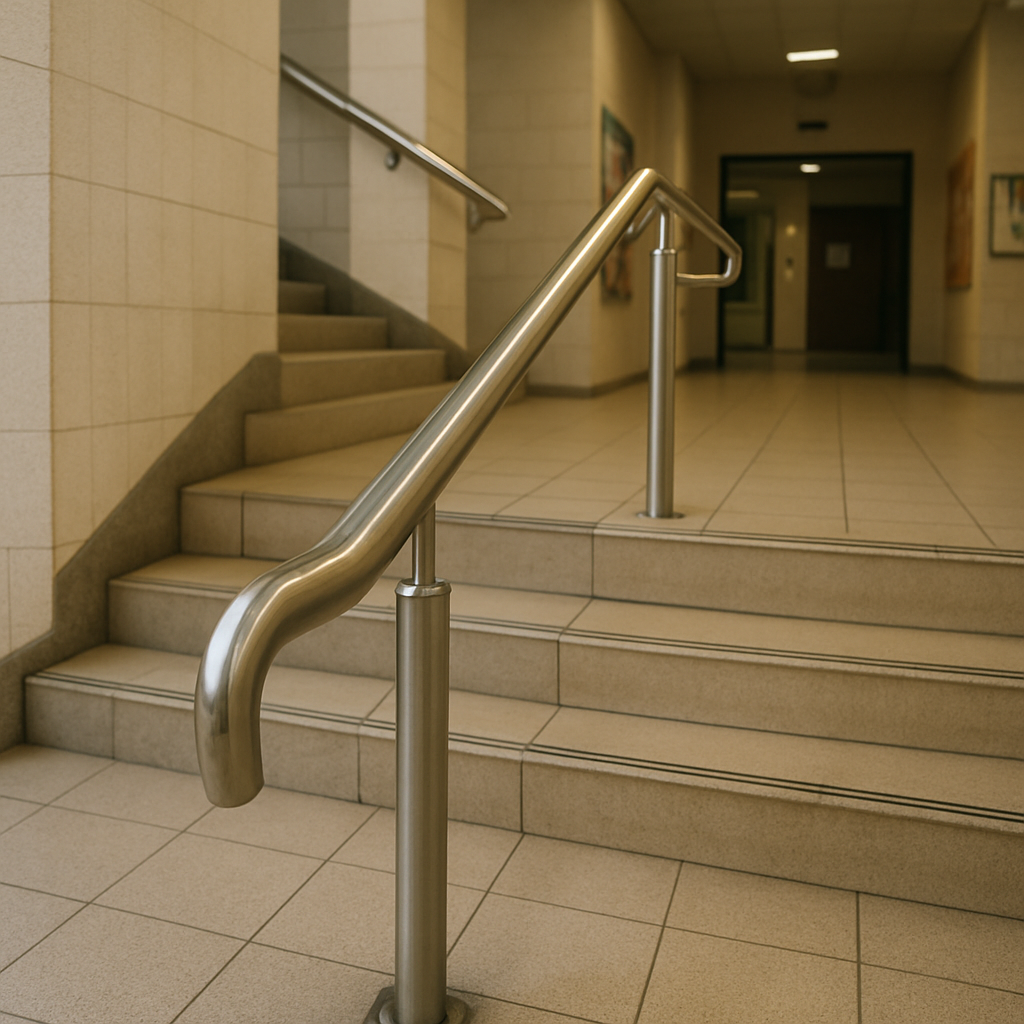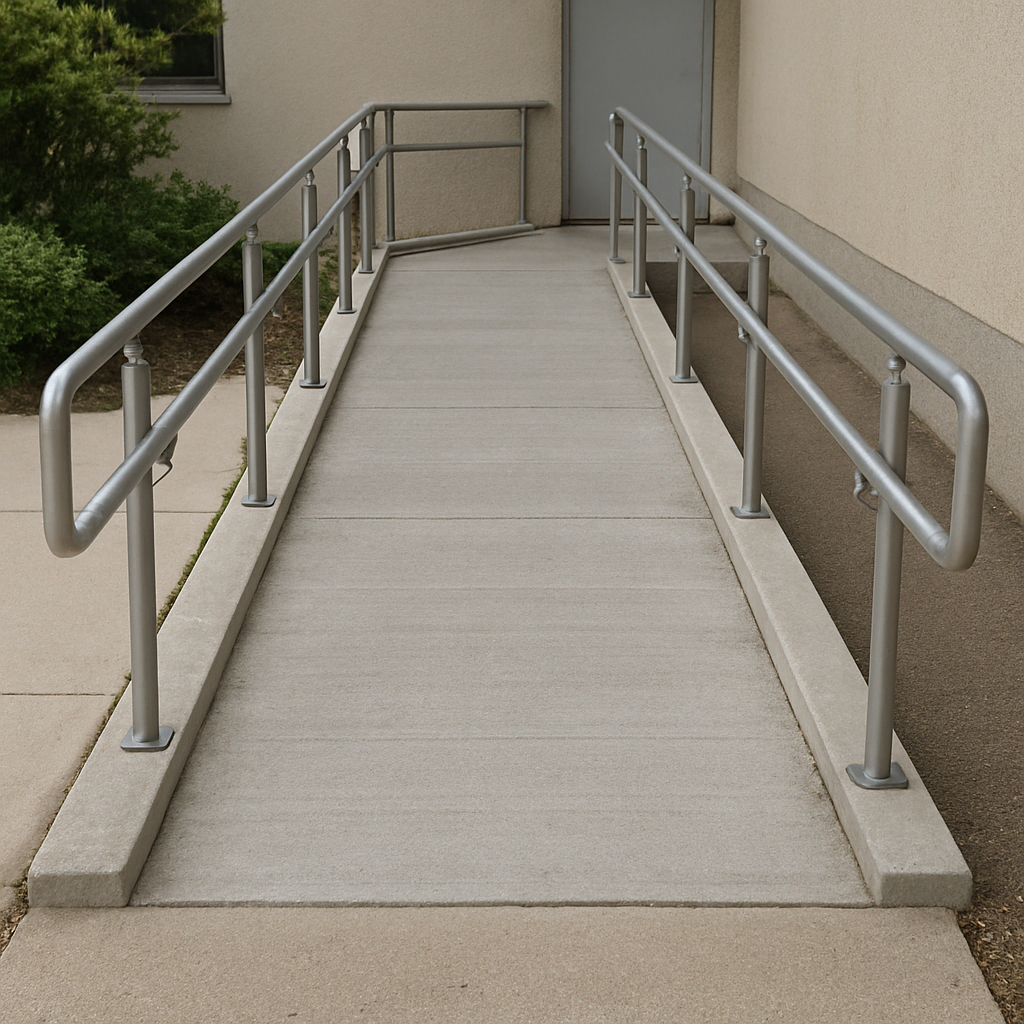 Service Hotline:13510328459
Service Hotline:13510328459
 205-206, 2nd Floor, Building 2, Xiazao Village Industrial Zone, Gaofeng Community, Dalang Street, Longhua District, Shenzhen City
205-206, 2nd Floor, Building 2, Xiazao Village Industrial Zone, Gaofeng Community, Dalang Street, Longhua District, Shenzhen City
 Service Hotline:13510328459
Service Hotline:13510328459
 205-206, 2nd Floor, Building 2, Xiazao Village Industrial Zone, Gaofeng Community, Dalang Street, Longhua District, Shenzhen City
205-206, 2nd Floor, Building 2, Xiazao Village Industrial Zone, Gaofeng Community, Dalang Street, Longhua District, Shenzhen City
Time:2025-09-10 Preview:
Handrails are an essential feature for ensuring safety and accessibility for individuals with disabilities. They offer support and stability, helping disabled persons navigate different environments with more confidence. In this article, we will delve into the importance of handicap handrails, the steps involved in handrail installation, and how to choose the right disabled person handrail for various settings.
Handicap handrails are more than just a convenience; they are a necessity for many individuals. These handrails help prevent falls, provide support, and increase independence for people with limited mobility. Here are some key benefits:
Handrails provide essential support for those who need it, reducing the risk of falls and injuries. For individuals with balance issues or mobility challenges, having a sturdy handrail to hold onto can make all the difference in safely navigating stairs, ramps, or uneven surfaces.
For many disabled persons, handrails enable greater independence. They allow individuals to move more freely and confidently, whether at home or in public spaces. This increased independence can lead to improved quality of life and greater participation in daily activities.
In many regions, building codes and accessibility standards require the installation of handicap handrails in public and commercial spaces. Compliance with these standards ensures that facilities are accessible to everyone, regardless of their physical abilities.

Selecting the appropriate handrail for a specific environment is crucial. Consider the following factors when choosing a handrail:
Handrails are available in various materials, including stainless steel, wood, and aluminum. Each material has its benefits:
Stainless steel is durable, resistant to corrosion, and easy to clean, making it ideal for outdoor and public spaces.
Wood offers a warm, natural appearance and is often used in residential settings. However, it may require more maintenance to prevent wear and tear.
Aluminum is lightweight, rust-resistant, and can be powder-coated in various colors for a customized look.
The design and style of the handrail should complement the surrounding environment while ensuring functionality. Some popular styles include:
Round and oval handrails provide a comfortable grip and are suitable for most settings.
Flat and rectangular handrails offer a modern look and can be integrated into contemporary designs.
Custom handrails can be tailored to meet specific needs and preferences, such as unique shapes or finishes.
Consider where the handrail will be installed. For indoor settings, factors like space constraints and wall materials should be taken into account. For outdoor installations, weather resistance and durability are key considerations.

Proper installation is essential to ensure the safety and effectiveness of handicap handrails. Here is a step-by-step guide to the handrail installation process:
Begin by assessing the area where the handrail will be installed. Measure the length and height needed, taking into account any slopes, stairs, or turns. Ensure that the chosen handrail meets local building codes and accessibility standards.
Once the measurements are complete, gather the necessary materials and tools. Depending on the type of handrail and installation locati0n, you may need:
Handrail brackets
Screws and anchors
Drill and drill bits
Level
Measuring tape
Screwdriver
Mark and Drill Holes
Using a level and measuring tape, mark the locations for the handrail brackets on the wall or mounting surface. Ensure that the brackets are evenly spaced and at the correct height. Drill pilot holes for the screws, taking care not to damage the wall or surrounding area.
Secure the brackets to the wall using screws and anchors. Once the brackets are firmly in place, attach the handrail to the brackets. Make sure the handrail is level and securely fastened, with no wobbling or movement.
After installation, test the handrail for stability and strength. Apply pressure to ensure it can support weight without bending or shifting. If any issues are detected, make adjustments or reinforcements as needed.

Regular maintenance and care are essential to keep handrails in good condition. Here are some tips for maintaining your handrails:
Clean the handrails regularly to remove dirt, dust, and grime. Use a mild detergent and a soft cloth for stainless steel and aluminum handrails. For wooden handrails, use a wood cleaner and polish to maintain their appearance.
Periodically inspect the handrails for any signs of damage, such as loose brackets, rust, or splintering. Address any issues promptly to prevent accidents and maintain safety.
Depending on the material and locati0n, handrails may require refinishing over time. Wooden handrails may need sanding and re-staining, while metal handrails may need a fresh coat of paint or powder coating.
Handicap handrails play a vital role in ensuring the safety, accessibility, and independence of disabled persons. By choosing the right handrail and ensuring proper installation and maintenance, you can create an environment that is welcoming and accommodating for all individuals. Whether for a residential home or a commercial space, investing in quality handrails is a step toward inclusivity and accessibility for everyone.
